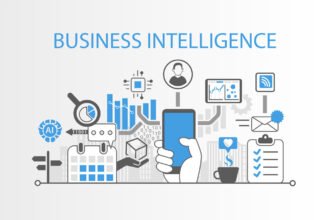This is the second in the series of posts on best business value.
This is the second in the series of posts on best business value.
2) Storyboarding becomes best practice for BI design
Typically BI applications are designed and built on a piecemeal basis. Either an IT person gathers the requirements for a specific dashboard or report, designs and builds it, and then hands it off to business people to figure out when and where to use it or the business people create their own dashboards or reports using self-service BI tools. Regardless of who creates it, the deliverable is a specific BI dashboard or report.
The most successful BI programs have come to realize: (a) that the true business value of BI is derived from the action(s) taken as the result of the analysis enabled by the BI application and (b) most business decisions are based on a business process that involves multiple analyses (often in workflow). These two insights have resulted in a best practice to design BI applications to enable the multiple analyses and workflows of the business process, rather than focusing on piecemeal BI deliverables.
Rather than cranking out dozens or hundreds of individual dashboard or reports without a clear recognition as to how they all fit together, the best practice is to determine the data and analytical needs of the business process along with the workflow. Storyboarding is the preferred BI design technique to accomplish this.
As discussed in Chapter 14 BI Design and Development in my Business Intelligence Guidebook:
“The storyboarding technique is used extensively in the film industry to design both live action and animation movies. Sketches are created to represent scenes in the movie; they are then laid out in scene sequence, illustrating all the major changes in action. Similarly, the BI storyboard lays out all the major actions that occur when business people are performing analysis in the BI application. The scenes that are used in the BI storyboard are each analytical process the business person performs in the BI application.
BI storyboards focus on the business user interaction of the analytical processes within the BI application. Storyboarding recognizes how business people actually work with BI applications such as a dashboard in order to gain insight into the business. Business people will typically perform several analyses, some of which are dependent on each other, in order to determine if they need to perform some action and what that action is. The storyboarding technique enables the BI designer gain a better perspective on how each type of analysis is related and enables the development a more effective layout.”
Storyboard example from the Business Intelligence Guidebook (see page 366):







